Nothing to me says Forth of July, like grilling out with family and friends. So I thought that I would do something a little special this year and make my own sausages for the Forth. But what really spurred the decision to make fresh sausage was when I found out that Fareway sells fresh casing packed in brine for $14.99 a pound. So after I bought a 1/2 lbs worth of casing, it kind of pushed me in the direction of making fresh sausages.
So now that I had the casing I was off to get a package of pork butt (two shoulders) from Sam’s Club, which ended up costing me $22.61 for 14.31 lbs (or $1.58 lb) of meat. Then it was on the last and most important items, the herbs (fresh and/or dried from my garden) and spices (all from Penzeys).
Could I have just gone to the grocery store instead of Penzeys and gotten a couple of jars of Tone’s or Spice Island spices, sure. But over the last year I’ve finally come to the realization that buying the 4 oz plastic pouches from Penzeys is not only half the price per ounce then getting spices at the grocery store, but that the spices are of a better quality at Penzeys (or for that matter The Spice House in Chicago) then what you get at the grocery store. So it’s now become a no brainier decision to get spices at Penzeys.
So with all the easy stuff out of the way, it was on to the “hard part” which was figuring out what kind of sausage(s) I was going to make. And after about a weeks worth of time thinking about it, I ended up decided on four different kinds of sausage. So in bulk form, wrapped into 1 lb rolls, I made a Maple Breakfast sausage, an Iowa Style Breakfast sausage and a Kentucky Breakfast sausage. And then for links I made a batch of New York Style Hot Links. Three of the recipes (Hot Links, Iowa and Kentucky) are from Bruce Aidells’ sausage book, with a couple of modifications to his standard recipe. While the Maple Breakfast sausage recipe started as your basic country sausage recipe (kind of like a Bob Evan’s breakfast sausage) with a couple of modifications to make it into a Maple Breakfast sausage.
For some reason the sausage making process took a lot longer then I was expecting. When I reviewed the time stamps on my pics, I ended up being in the kitchen on Friday night from 5:30pm until 4am, when the last of the sausage was wrapped up and vacuum sealed, and everything was cleaned up. I did take a couple of breaks during the sausage making to rest my back, but it was an intense session to say the least.
So onto the recipes and technique (I’ve broken down each recipe into three sections meat/herb & spices/liquids just to increase readability):
Maple Breakfast sausage (Have not tried the final product yet)
- 2 1/4 lbs of less fatty pork shoulder
- 3/4 lb of more fatty pork shoulder
- 1 TB Kosher Salt
- 1 tsp whole black pepper corns, ground to medium/fine
- 4 tsp of whole dried sage leaves, ground to medium/fine (original recipe called for 2 tsp dried sage)
- 1 tsp dried thyme
- 1/8 tsp Cayenne
- 1 Clove of garlic, finely minced
- 3 TB Maple Syrup
- 1/4 cup water
Kentucky Breakfast sausage (Turned out good, a nice and spicy breakfast sausage)
- 2 lbs of less fatty pork shoulder
- 1 lb of more fatty pork shoulder
- 1 TB Kosher Salt
- 2 tsp whole black pepper corns, ground to medium/fine
- 4 tsp of fresh sage leaves, finely minced (original recipe called for 2 tsp dried sage)
- 1 tsp Cayenne pepper
- 1 tsp whole Coriander, ground to medium/fine
- 1/2 tsp ground nutmeg
- 1/2 cup water
Iowa Breakfast sausage (Turned out good)
- 2 1/4 lbs of less fatty pork shoulder
- 3/4 lb of more fatty pork shoulder
- a heaping 1/4 cup of freshly minced Parsley
- a heaping 1/4 cup of freshly minced Green Onions or Egyptian Walking Onions
- 2 tsp of fresh Sage leaves, finely minced
- 1 tsp of fresh Thyme leaves, finely minced
- 1 tsp of fresh Basil leaves, finely minced
- 1 tsp of fresh ginger root, finely minced
- 1 Clove of garlic, finely minced
- 1 TB Kosher Salt
- 1 tsp whole black pepper corns, ground to medium/fine
- 1 tsp Red Pepper Flakes
- 1/4 cup water
New York Hot Links sausage (Turned out good, hot but not too hot)
- 3 lbs of less fatty pork shoulder
- 3/4 lb of more fatty pork shoulder
- 1 TB + 1 tsp Kosher Salt
- 2 tsp whole black pepper corns, ground to medium/fine
- 1 TB Anise Seed, cracked (original recipe called for 2 TB Anise or 2 TB Fennel, but I went with a 50/50 mix instead)
- 1 TB Fennel Seed, kept whole
- 1 tsp Red Pepper Flakes (original recipe called for 1 TB)
- 1 tsp Cayenne
- 4 Clove of garlic, finely minced
- 1 TB Ouzo (original recipe called for 2 TB Sambuca, which I didn’t have on hand)
- 1/4 cup water
How to make the sausage:
After deboning both shoulders, I cut the pork shoulder meat into about 1” x 1” x 1” pieces, or basically pieces small enough to fit into the feed tube of my KitchenAid grinder attachment. After I cubed all the meat, I separated it into two categories, more fatty and less fatty. Since this would help me get pretty close to the fat ratio’s that you would normally see in a sausage recipe.
I then placed all the meat onto a half-sized jellyroll pan and put it into the fridge to cool down a little bit. I would have placed the jellyroll pan it in the freezer, but at that moment I just didn’t have the room in my freezer.
So with the meat chilling out, I started to pre-mix all the herbs and spices needed for each recipe.
Now onto the meat grinding part of this project.
Using my digital scale, I portioned out the meat for each recipe, using the more fatty pork where you would normally use leaf fat. With the large die installed in the grinder, I then ran the meat/fat twice through the grinder, to give it an even consistency. Finally the double ground meat was placed into the mixing bowl of the KitchenAid mixer, along with the herbs, spices and liquids. And with the beater attachment, everything was mixed up about 30 seconds to 1 minute to get everything evenly blended. I then transferred the semi-finished sausage to a Pyrex dish to placed it into the fridge to await final packaging into 1 lb rolls or sausage links.
Stuffing into casing
The only sausage out of the four that I stuffed into casing was the Hot Links. From one of the sections of casing that I bought, I cut off a piece about 60” long, which turned out to only be enough for 3 ¼ pounds of sausage, with ½ lb of sausage meat wrapped up in bulk form. So next time I’ll need more like 75” to 80” of casing for 3 ¾ lbs of sausage.
With the length of casing that I cut off, I rinsed out the inside of the casing two or three times in the sink to wash away the brine and then just let it sit in a bowl of cold water for about 15 mins. So with the casing prepped, I placed the sausage stuffing attachment on the grinder attachment and then placed the casing around the stuffing horn. With everything all set, I pulled the bulk sausage out of the fridge and started to feed it through the grinder into the casing.
This was actually a little trickier then I expected, since I’ve only stuffed sausage with two people. But the main thing that I noticed right away was that the KitchenAid sausage stuffing attachment will get the job done, but it’s not the smoothest of experiences. The big issue was that it wasn’t putting enough meat into the casing. So I had to keep stopping the grinder and with casing between my thumb and index finger, I had to force the meat down the casing in order to get a full/plump sausage. Eventually, I think that I’m going to have to spent the $150 and get a dedicated 5 lb capacity sausage stuffer from LEM.
So with the sausage all stuffed into the casing, I then tied them off into about 6” links, with six links to a vacuum package. Since if I’m going to make my own sausage links, I might as well match the number of links to how many buns are in a package.
Side Notes:
1) Out of the four sausages that I made, I’ve tasted everything but the Maple Breakfast. And all three ended up tasting great. The Hot Links I made were nice and spicy, but not super hot, since I only used a teaspoon instead of a tablespoon of red pepper flakes. But one of these times, I might have to make the super hot version, just to see how hot it could be. The Iowa & Kentucky breakfast sausages were also winners for a mild and a hot breakfast sausage.
2) Just as a quick estimate, if it’s costing me about $2 to $2.25 a pound in raw materials to make sausage, and you clearly know whats in my sausage. It makes you wonder what goes into some of the breakfast sausage that you can get at the grocery store for $1.00 per 1 lb roll. And that’s the retail price, so it’s even less when the store bought it wholesale from the packing house. Call this a little bit of food for thought (pun intended.)
3) I’m sure there are plenty of other side notes that I’m forgetting about. But I can always post those at a later date. Since this post is long enough to begin with.
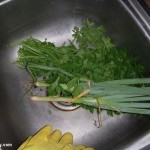
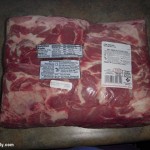
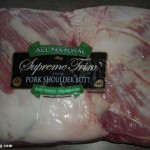
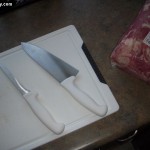
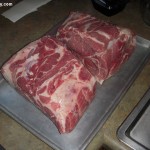
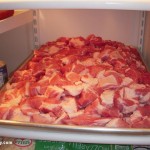
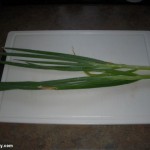
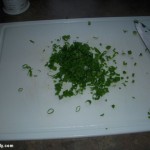
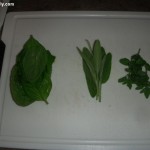
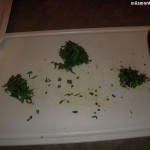
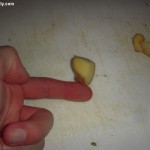
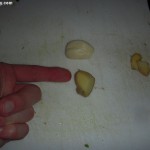
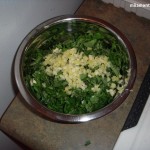
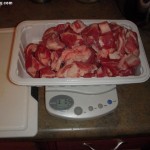
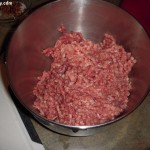
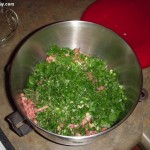
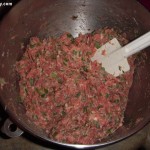
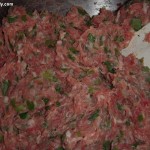
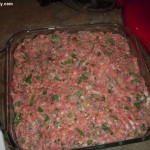
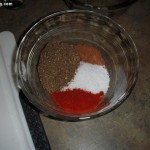
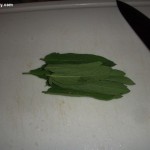
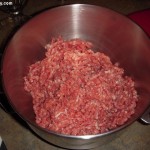
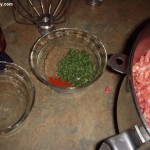
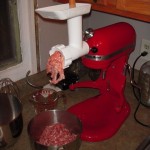
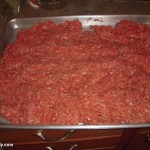
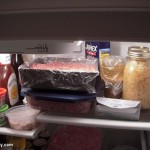
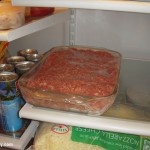
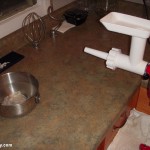
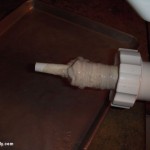
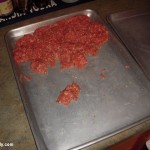
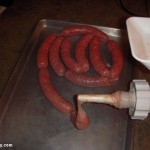
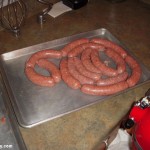
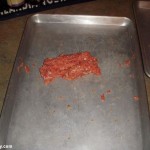
One comment on “Sausagefest – July 2010”
wonderful post